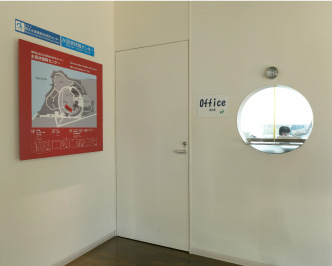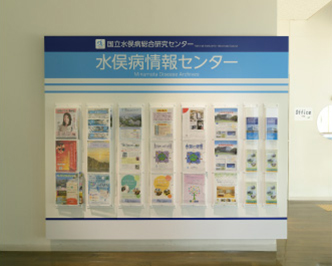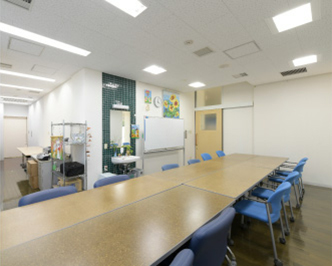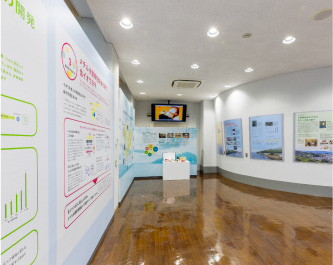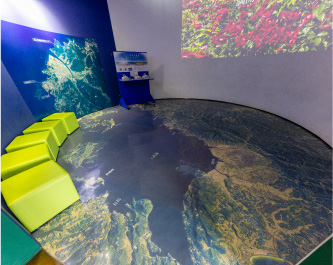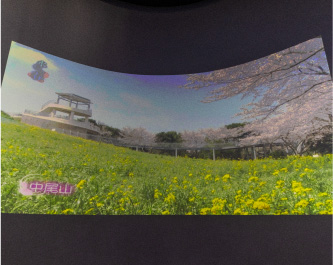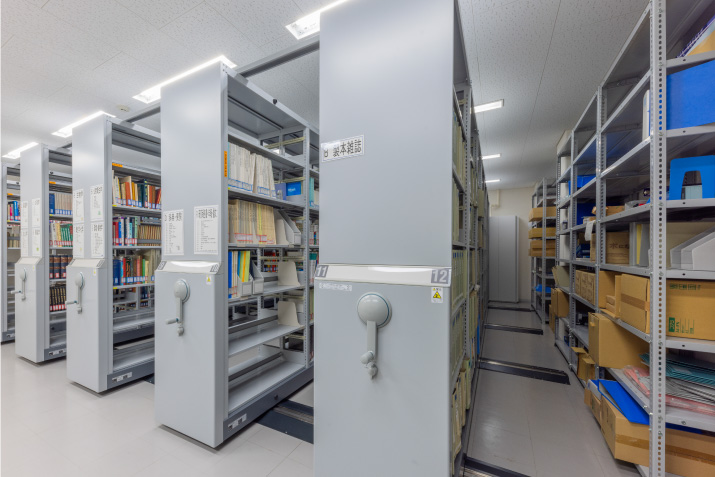Facility guide
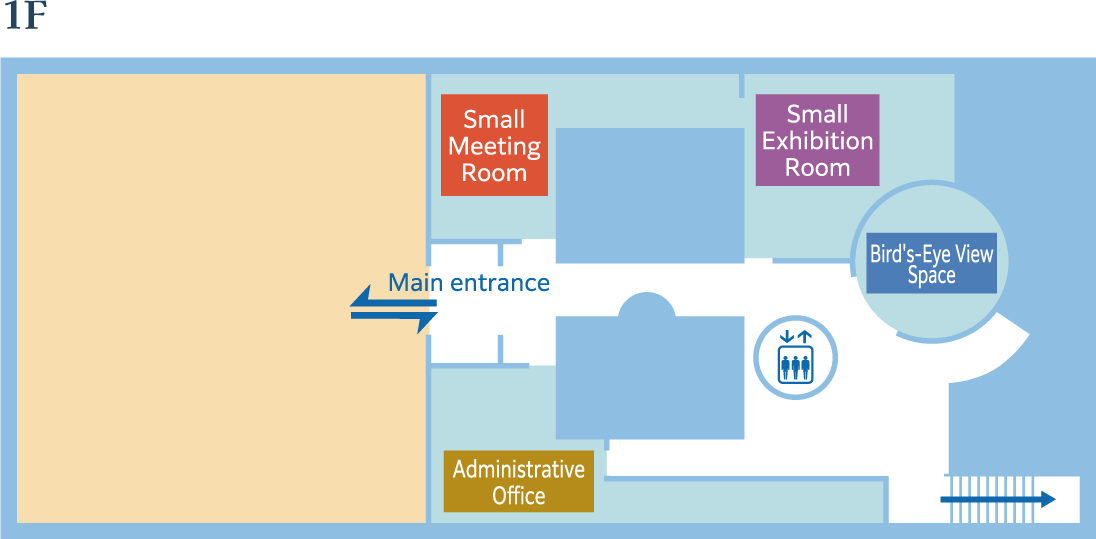
Administrative Office
The Administrative Office is where the Minamata Disease Archives staff work. Please do not hesitate to drop by if you require assistance during your visit or have any inquiries. Please also come to the Administrative Office if you wish to have a hair sample taken to have the mercury level measured. Beside the Administrative Office, there is also a spot stocked with a variety of brochures available for pickup.
Small Meeting Room
In addition to the meeting space, the room is equipped with an AED (automated external defibrillator) and a cot. The cot can be made available if you become unwell during your visit. Please feel free to let us know.
Small Exhibition Room
The room is used for special exhibition.
Bird's-Eye View Space
A three-segment video that shows today's Minamata City is screened here: "A Minamata Aerial Trip (Minamata seen from the sky)," "Four Seasons in Minamata (Minamata seen from the ground)" and "An Undersea Walk in Minamata (Ocean of Minamata)." Underfoot in the space lays a satellite photo taken of the area off the coast of the Yatsushiro Sea, in which visitors can observe geographical features of the area where Minamata disease occurred.
In the VR corner, visitors can enjoy a 360° view of Minamata as it is today with the help of VR goggles.There are three videos: the sky, the sea, and the mountains, and you can see the current state of Minamata from different perspectives.
For details of the video, click here
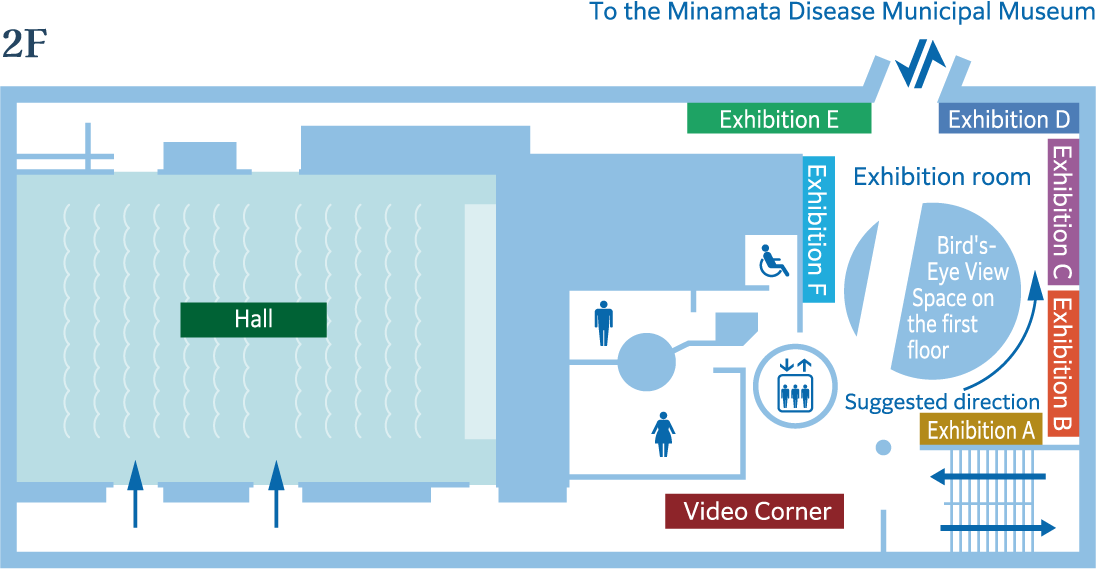
Permanent exhibitions on the second floor
In addition to learning about Minamata disease, visitors can learn facts about mercury, the substance that caused Minamata disease, including types and properties of mercury that exist in nature and the transit (circulation) of mercury. Also on display are the results of measurements, updated constantly, of the mercury concentration taken of the seawater and in the atmosphere of Minamata Bay. Other information being presented in the Archives includes findings from research conducted by the National Institute for Minamata Disease, as well as information on international cooperation activities for mercury pollution issues around the world and on the Minamata Convention on Mercury.
-
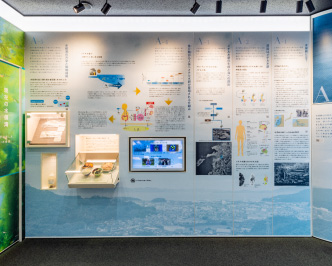
A sketch of Minamata disease(Exhibition A)
The exhibition covers the mechanism of Minamata disease onset and characteristics of symptoms, the effects of methylmercury on the brain, the process of methylmercury production, release into the sea, and accumulation in the human body, and the pollution of Minamata Bay and environmental restoration.
-
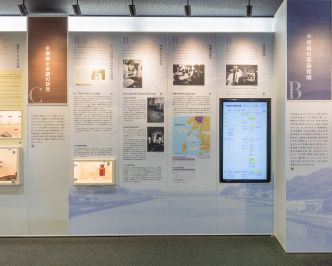
Determination of the cause of Minamata disease(Exhibition B)
The exhibition displays the research and history of the research by researchers and doctors from Kumamoto University and various other organizations leading up to the investigation of the cause of Minamata Disease, as well as the chronology of the early research.
-
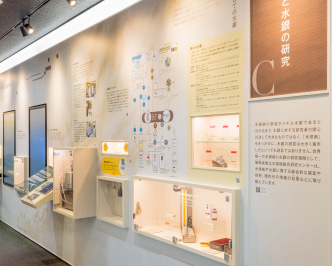
Research on Minamata Disease and mercury(Exhibition C)
Exhibits include the forms of existence of mercury as a substance, recycling, methods of measuring mercury, and research on Minamata disease and mercury by National Institute for Minamata Disease.
-
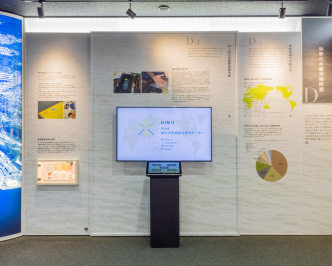
Mercury pollution incidents around the world(Exhibition D)
The exhibition displays global mercury emissions, pollution from metallic and inorganic mercury emitted during small-scale gold mining and other processes, and the international contributions of the National Institute for Minamata Disease to the global mercury pollution problem.
-
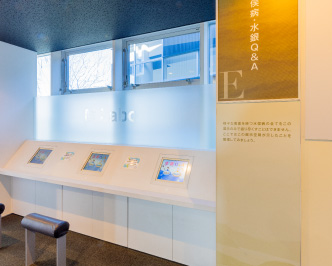
Questions and answers about Minamata disease and mercury(Exhibition E)
This is a questions and answers corner where you can use a touch panel to solve your questions about Minamata disease and mercury. Organize what you have learned in the exhibition space of the Minamata Disease Archives.
-
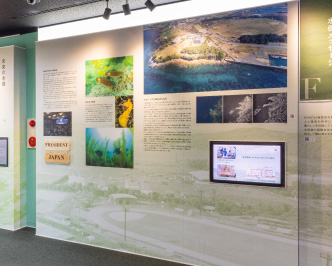
Messages from Minamata(Exhibition F)
This exhibit shows Minamata as it is today and what is being done for Minamata in the future. Join us to think about what we can do to make the most of our experience of Minamata disease.
-
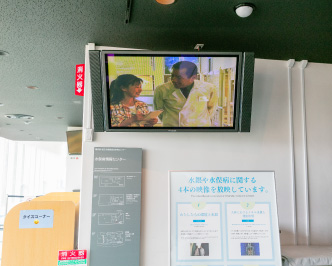
Video Corner
Videos themed on mercury or on Minamata disease are screened here.
Hall
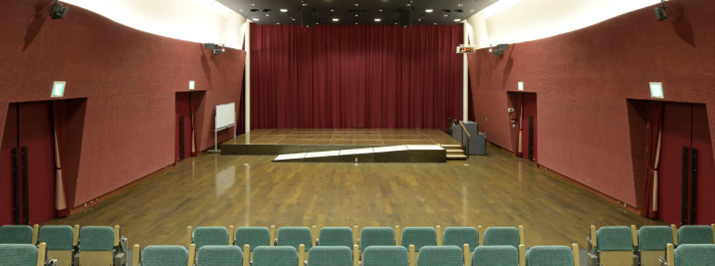
A facility used for events, conferences and other occasions related to Minamata disease or research on mercury.
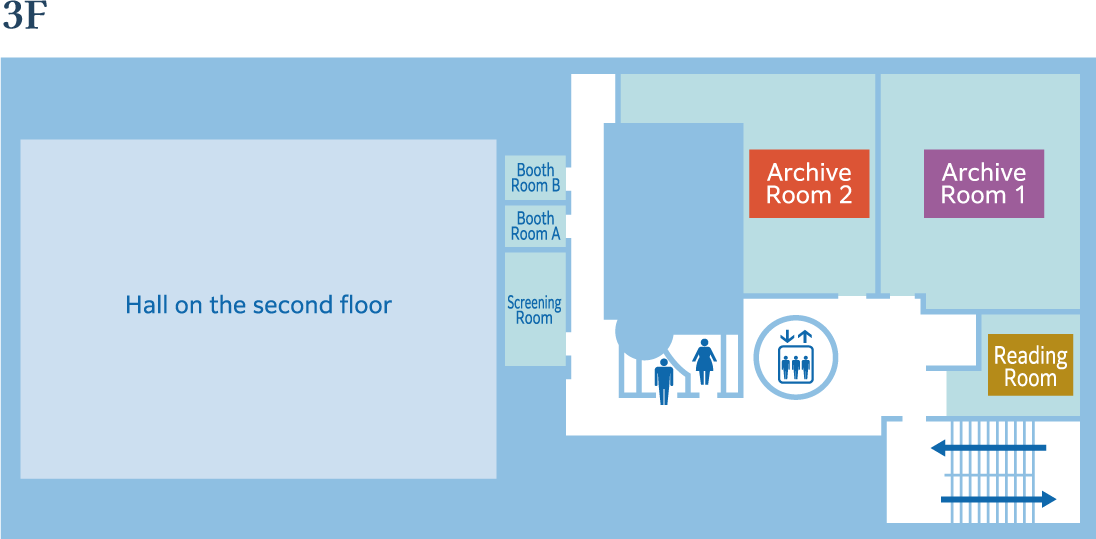
Archive Rooms (1 and 2)
Documentary materials, books, etc. related to Minamata disease are collected and stored here and are also available for viewing.
Archive Room 1, which mainly serves as a storage of books, can be accessed by staff-accompanied regular visitors, who can also view the archived items. If you wish to access the room to view the collection, please talk to our staff in the Administrative Office on the first floor.
Archive Room 2, principally a depository of historical documents and other archival materials on Minamata disease, is not accessible to the general public. (Publicly disclosable materials may be viewed upon advance request.)
The Archives was granted a designation as a Historical Document Depository Institution (among 11 such institutions in the country) in April 2011 by the Prime Minister.
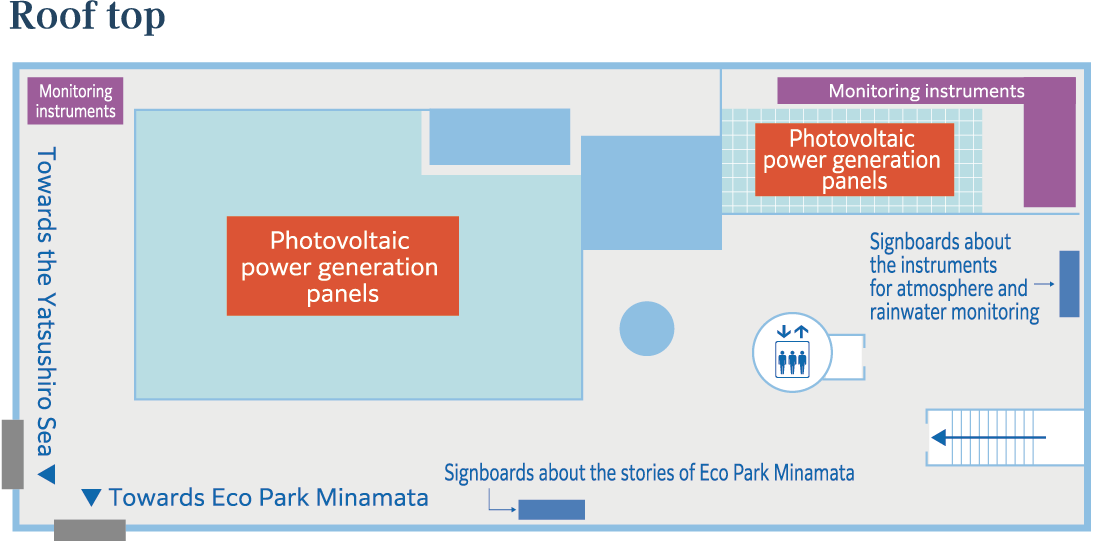
Rooftop
Visitors can go up to the rooftop, which is accessible by stairs or elevator, to enjoy scenic views of both mountains and the ocean.
On the ocean side, there is a sweeping view of Minamata Bay, Eco Park Minamata and the Yatsushiro Sea, on the opposite shore of which Shishijima, Goshourajima and other islands of the Amakusa Archipelago can be seen.
Then on the mountain side, Eco Park Minamata and a cityscape of Minamata come into sight of the viewer, along with an expanse of a mountain range.
Eco Park Minamata, which stands out in these panoramic rooftop views, sits on reclaimed land that was so developed in order to seal off the sludge containing mercury that had amassed at the bottom of Minamata Bay; it is now a park that welcomes a large number of visitors.
The rooftop is also a space furnished with research instruments for measuring the mercury concentration in the atmosphere and in rainwater, which constitutes part of the studies that the National Institute for Minamata Disease engages in. And you can also see the signboards about the stories of the Eco Park Minamata and these research instruments.
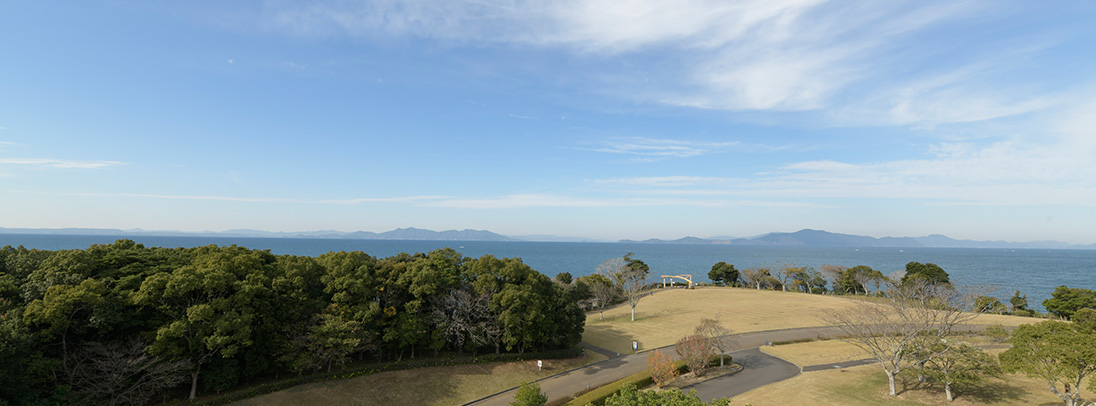
Towards the Yatsushiro Sea and the Amakusa Archipelago
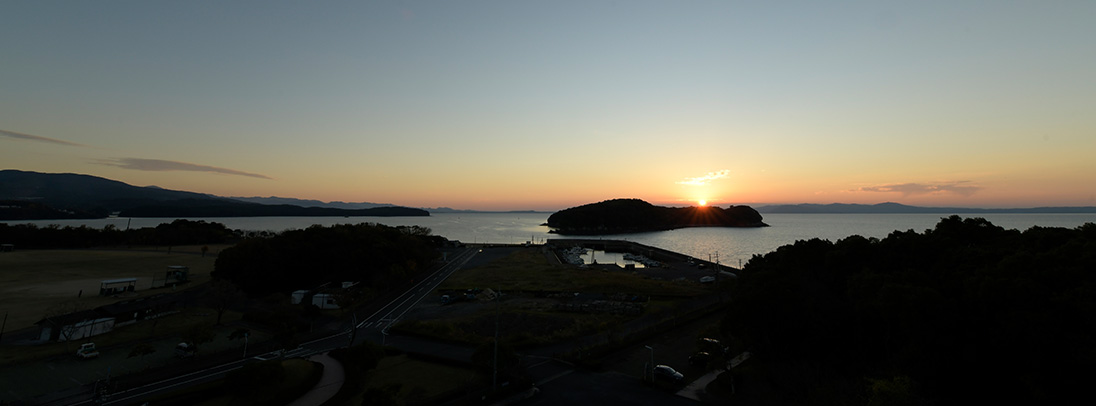
Towards Eco Park Minamata and Minamata Bay
-
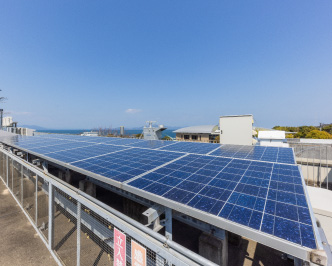
Photovoltaic power generation panels
-
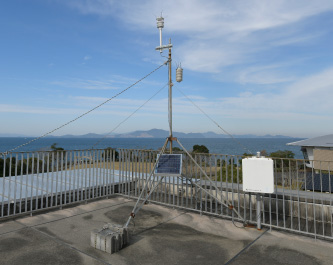
Instruments for atmosphere and rainwater monitoring
-
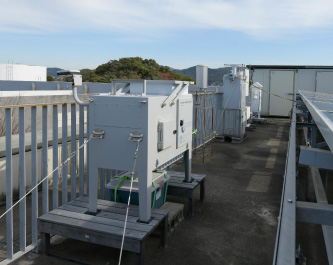
Instruments for atmosphere and rainwater monitoring
-
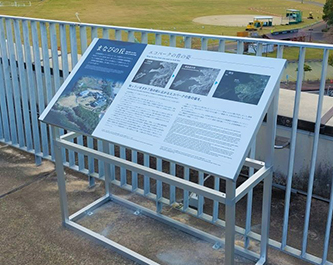
Signboards about the stories of Eco Park Minamata
-
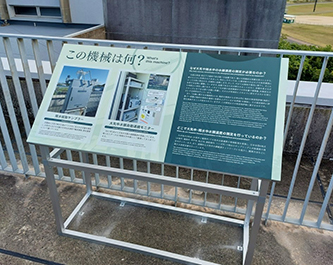
Signboards about the instruments for atmosphere and rainwater monitoring
